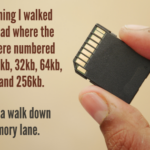The Court of Appeals for the Ninth Circuit has overturned a lower court’s ruling that had granted summary judgment in a Telephone Consumer Protection Act case regarding the definition of what constitutes an automated telephone dialing system.
The ARM industry has been waiting for a ruling in Marks v. Crunch San Diego for some time, but this was not the ruling it was hoping for. A copy of the ruling can be accessed by clicking here.
An ATDS is any device that “stores telephone numbers to be called, whether or not those numbers have been generated by a random or sequential number generator,” the Ninth Circuit ruled in remanding the case back to the District Court.
The plaintiff received three text messages from the defendant, and subsequently filed suit, alleging the defendant violated the TCPA because the messages had been sent using an ATDS. The defendant won a summary judgment motion, arguing that the technology used to send the text messages did not meet the TCPA’s definition of an autodialer because the technology lacked a random or sequential number generator. In looking at the Court of Appeals decision in ACA International v. Federal Communications Commission and its own interpretation of the statute, the Ninth Circuit disagreed.
In issuing its ruling, the Appeals Court determined that what matters most is the statute itself, and not any of the orders or rulings that have been issued by the FCC related to the TCPA since the law was enacted. In issuing its ruling, the Ninth Circuit said that an ATDS is defined as:
… equipment which has the capacity—(1) to store numbers to be called or (2) to produce numbers to be called, using a random or sequential number generator—and to dial such numbers
The Ninth Circuit’s ruling creates a split at the Appeals Court level regarding the definition of an ATDS, which means that an appeal to the Supreme Court may be on the horizon. The Third Circuit Court of Appeals in Dominguez v. Yahoo had ruled that an ATDS must be able to generate random or sequential numbers in order to qualify as an ATDS. In a footnote, Judge Sandra Ikuta, called the Third Circuit’s ruling an “unreasoned assumption.”
Because the system used by the defendant stores numbers and dials them, that is sufficient to survive a summary judgment motion, Judge Ikuta wrote.









This is yet another glaring example of why the emphasis should be on the informational purpose of the communication, its importance and legitimacy, not the technology used to make it.